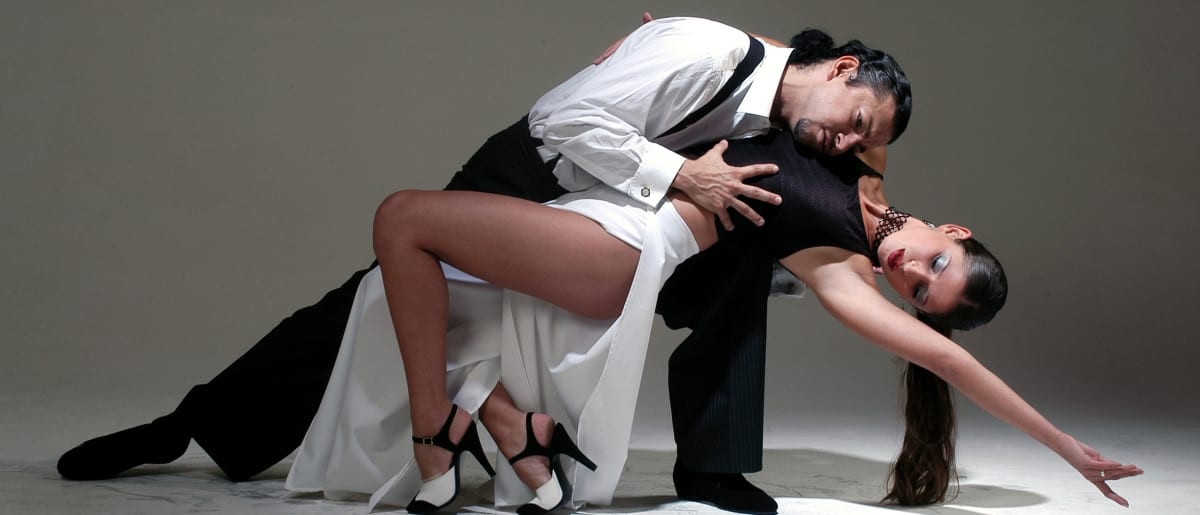Tango Motion, bills itself as a journey into the heart of Tango Argentino. The show itself consists of a four-piece tango orchestra, Tango Siempre, playing the band members’ favourite tango music, sometimes on its own and sometimes accompanied by one of two dancer couples.
Tango Motion is an intimate, informal affair. After the first few pieces, quartet leader, pianist Jonathan Taylor, took the microphone and started to chat to the audience, informally, about the music. He told a few anecdotes and some mildly amusing stories about band members. It was well into the second half of the performance that he introduced the other band members and the dancers.
I saw Tango Motion at the Oxford Playhouse, a traditional, large theatre with a seating capacity of just under 700 and a raised stage. The quartet of musicians were tucked at the very back of the stage, to give the dancers room to move. This meant that the four musicians were very far away from the audience; creating difficulties especially when the band played intimate instrumental pieces. Around one third of the depth of the stage was taken up by the musicians and as such it felt as though the dancers didn’t have enough room to move freely – their primary movement directions being across the stage.
In a smaller, more intimate venue where the audience is on the same level as the musicians and dancers, then the lack of proper stage management, space, clearly defined entrances and exits and the rambling informal nature of the commentary would not have mattered at all. In fact, it would have added to the charm. However, in a traditional venue, such as the Playhouse (and many of the other venues on this tour), more care needs to be taken with the production and stage management side of the show.
Before going to the show, I had assumed that Tango Motion would be a celebration of the art of tango as a dance form. This was not the case – Tango Motion is an exploration of certain styles of tango music, some of which is accompanied by a dancing couple. There was no explanation at all of how tango as a dance form began or has evolved.
All the dances were choreographed aside from one dance, where the band leader invited one of the dancer couples to improvise to the music. It was only during this simple, spontaneous tango, far less intricate than the choreographed dances, that I got a real sense of tango as a living, breathing art form full of suppressed longing and simmering passion. It was breathtakingly beautiful.
Rather unexpectedly, the real star of Tango Motion was the violinist, Emma Blanco. Her passionate virtuosity with the many prominent violin parts, bordering on the verge of concerto cadenzas, did more than anything else to recreate the hot blooded, steamy nights of 1930s Buenos Aires.
The show would have benefited from a director to properly coordinate and situate the dancers and musicians throughout the duration of the show. A bespoke lighting designer would have helped define the space. A programme would have helped audience members who aren’t already aficionados to know the names of the dancers, to know whether the radical changes in costume style had any significance and to understand the styles of tango being danced, etc.
Tango aficionados will not care two hoots about the venue or the staging of this show and will not need a programme. They will love it for the beautifully and lovingly rendered music.
Others will be left wondering…

